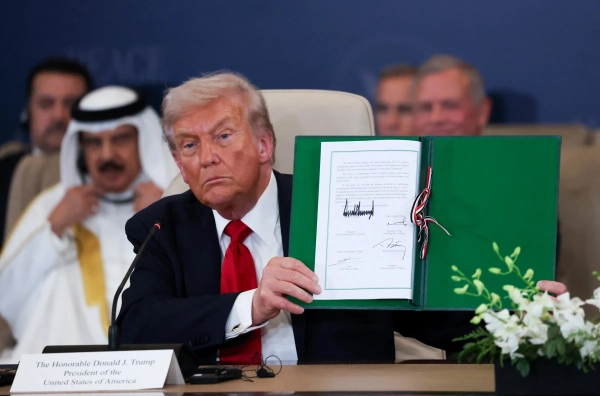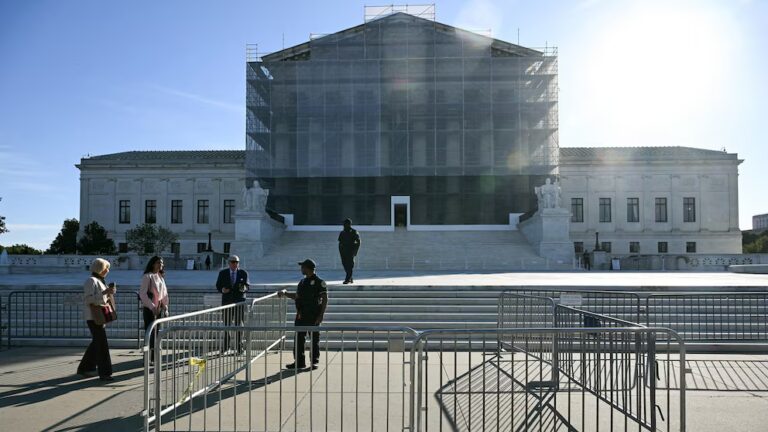“`html 
Following the elation and comfort from Monday’s swap of prisoners and the truce, Tuesday has delivered some threatening indications concerning the prospects for the Gaza peace agreement.
Firstly, the gunfire has not ceased entirely. Five Palestinians perished in an Israeli aerial vehicle strike on Tuesday morning in Gaza’s Shejaiya locality. As per the Israel Defense Forces, they had moved past the designated “yellow line” to which Israeli forces had retreated under the peace accord. Hamas is similarly providing minimal indication that it intends on ceasing to exist as a political or armed entity: On Monday, footage surfaced showing the group openly executing seven individuals charged with cooperating with Israel. Israel has also opted against reopening the Rafah boundary crossing, connecting Gaza and Egypt, and to persist in restricting aid entering the Gaza Strip, owing to Hamas’s inability to return the deceased remains of captives still within Gaza. Four corpses were handed over on Monday, with 24 still outstanding. The Red Cross has stated that it will require duration to discover some of the bodies beneath the debris.
President Donald Trump conveyed on Monday that the “toughest segment” of ending the conflict had been realized and that reconstructing Gaza would likely be the “simplest.” Currently, it’s challenging to locate validation for such optimism.
What’s gradually emerging as the arrangement comes into force is that its paramount asset is likewise its chief flaw: It postponed the “most difficult” inquiries — when, if ever, will Israeli forces withdraw from Gaza entirely? When will Hamas disarm? Who will govern Gaza following their departure? — for a later time, so as to prioritize a cessation of hostilities and the freeing of hostages.
Looking back, this was conceivably the correct method, and in all likelihood the singular rationale the arrangement materialized. When Trump initially disclosed the parameters of the arrangement in September, the apprehension was that the two factions would concur in principle yet insist on arguing over every minute aspect while the combat persisted. Indeed, that’s what they attempted to undertake. When Hamas responded to the proposition with a conditional “yes, but” in early October, Israeli Prime Minister Benjamin Netanyahu presumed the arrangement was null. Conversely, Trump publicly applauded Hamas for consenting to his proposition, instructed Netanyahu to cease being “so damn negative,” and proceeded to propel the process forward. Simultaneously, Qatar and Egypt allegedly employed coercion on Hamas to embrace an arrangement they had initially deemed a non-starter.
All of this was effective because numerous provisions of the 20-point strategy are undefined and lack specified timelines. It’s reasonable to surmise that many of them are not actually strategies for occurrences that will genuinely transpire, but wording included to render the agreement minimally palatable to all involved parties. Will Hamas participants who surrender their weaponry genuinely be pardoned and granted haven overseas? Will the Palestinian Authority actually finalize a “reform initiative” making it suitable to Israel as Gaza’s new administrator? Will there genuinely be an “International Stabilization Force” to supply security? Or an “interfaith discussion process” to alter the perspectives of Israelis and Palestinians? Will there genuinely be a “Trump economic advancement plan” to usher in prosperity to the shattered expanse? Will former Prime Minister Tony Blair, a figure detested in a substantial portion of the Middle East for his involvement in the Iraq war, genuinely assume a position in governing Gaza? Even Trump harbors some uncertainties concerning the last matter.
The arrangement is fashioned as a sort of diplomatic inkblot test that permits all involved to perceive what they desire within it. This was apparent on Monday night when Trump and Egyptian President Abdel Fattah el-Sisi seemed to disagree regarding whether the strategy mandates a two-state resolution. (It does, but fleetingly and in broad terms only.)
In the near future, none of this is detrimental. Had the negotiators insisted on formulating a thorough and binding roadmap for Gaza’s political destiny before the arrangement took effect, the IDF would in all likelihood be engaged in door-to-door combat throughout Gaza City currently and the hostages would remain in captivity, as would the nearly 2,000 Palestinian prisoners who were also freed on Monday.
The agreement halted the bloodshed, and it could additionally serve as an avenue for a political progression that results in a more promising future for Gaza and the region — or at the very least a less bleak present. However, as the occurrences of this week are already demonstrating, it’s an avenue that could swiftly shut.
Will the peace last this time?
It’s worth recalling that we’ve encountered this before — and rather recently. A cessation agreement, negotiated in the concluding days of the Biden administration, was still operational when Trump assumed office. (Trump and his representative Steve Witkoff were participants in the discussions that culminated in that cessation.) That agreement was segmented into three stages. The initial, obligatory stage, entailed a respite in the combat and the liberation of a portion of the Israeli captives in exchange for Palestinian detainees. Stage two, in which the two factions were intended to commence dialogues for a complete cessation of the conflict, the liberation of the remaining captives, and the prospective governance of Gaza, never transpired. Displeased with the dearth of advancement on hostage releases, Israel recommenced aerial bombardments in Gaza in March, and suspended food provisions into the territory, with Trump’s complete backing. (At the time, Trump remained enthralled with the notion of “cleansing” Gaza and converting it into a vacation resort, which likely did not improve circumstances.)
This instance is dissimilar, principally because the last of the captives have been set free. (Hamas leaders had reportedly begun to perceive them more as a burden — furnishing Israel with a justification to sustain the fighting — than as a valuable negotiating instrument.) However, if Hamas combatants are still armed and in control of a substantial area of Gaza, and if IDF troops remain present within the territory, it’s not challenging to envision a spectrum of scenarios that could precipitate the war restarting.
Give Trump credit where it’s due: During the preceding several weeks, he has illustrated that his inclination to exert genuine pressure on Netanyahu and to leverage his intimate affiliations in the Gulf can yield outcomes in the Middle East considerably more rapidly than numerous specialists and peace process veterans deemed feasible. (Whether he could have attained it significantly sooner is a separate query.) However, preventing the arrangement from collapsing, let alone realizing the “new beginning for the Middle East,” may necessitate him to remain as engaged and inclined to implement such pressure as he has been for the preceding several weeks.
The stipulation in the arrangement that designates Trump as the head of the “board of peace” supervising Gaza’s governance may be conceived as a method to sustain his engagement. Others anticipate his yearning for the still elusive Nobel Peace Prize may concentrate his focus.
Trump never hesitates to proclaim triumph irrespective of the realities. He now asserts to have concluded eight wars — several of which implicated countries that were not genuinely at war.
In Gaza, that inclination of his was an advantage. A more factual and pragmatic methodology would in all likelihood not have accomplished this arrangement. However, sustaining the peace, and averting further carnage in Gaza, may now hinge on Trump’s capacity to persist in addressing a problem even after he’s already received acknowledgement for resolving it.
“`
Source: vox.com





